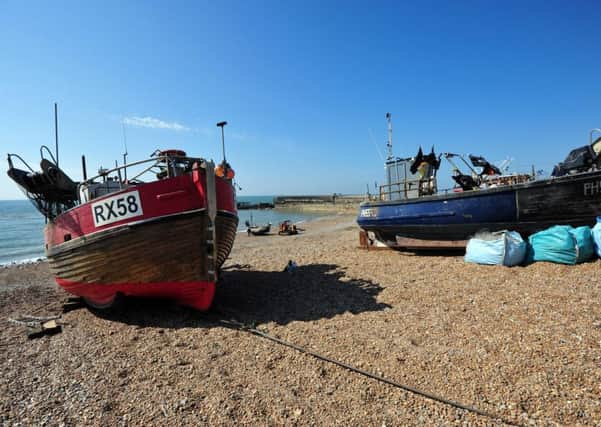Stopping the erosion of Hastings' fishing fleet, a vital part of our town's character


These traditions began in Anglo-Saxon times, with the adoption of the term ‘Cinque Ports’ to describe five prominent ports in the south east: Hastings, New Romney, Hythe, Dover and Sandwich. In 1155, Henry II conferred a Royal Charter on the Cinque Ports, making Hastings the principal Cinque Port, requiring them to provide ships for the Crown in exchange for special powers to hold courts and issue justice, including executions, as well as rights to wrecks washed up on local beaches.
Hastings continued as a major port until the Great Storm of 1287, an event of such ferocity that it diverted the River Rother, leaving the sea ports of New Romney and Winchelsea isolated a mile inland, and causing a cliff to collapse in Hastings, blocking the harbour. Projects to build a new harbour came and went through the centuries, but none was successful, with the most recent being at the beginning of the 20th century, and of course the recently withdrawn harbour and marina project.
Advertisement
Hide AdAdvertisement
Hide AdThe Hastings fishery continued as a beach-launched fleet. Launching boats from the beach has always been perilous in rough seas and constrains the number of days boats can put to sea. The fishing beach, or the Stade, had suffered from continuous erosion through a west to east movement of shingle known as ‘longshore drift’. But this was arrested to some extent by the building of the Harbour Arm as the first (and only) part of the harbour construction in 1896. This not only stopped erosion of the fishing beach, but also caused shingle to accumulate on the western side, creating Pelham beach, and the expansion of tourism facilities beyond the old shoreline that ran along the seafront road.
During the 20th century, the Harbour Arm fell into disrepair, but a recent government-funded project undertaken by Hastings Council has completely repaired it, filling in the gaps to make sure Pelham Beach remains in place for at least another hundred years.
In recent years, the Hastings fishery has suffered its biggest decline because of restrictive quota allocations. This is in part because of EU quotas but has much more to do with the unfair way the UK government allocates quota. Almost all of it goes to the giant factory trawlers rather than the small boats that make up the Hastings fleet, and fish more sustainably. In recognition of the plight of the Hastings fishery, Hastings Council has successfully bid for EU funds that are distributed through a Fisheries Local Action Group. Around £2m has been won for Hastings in this way, paying for equipment for fishing boats, shingle-moving bulldozers, repairs to the fishermen’s sheds, improvements to the fish market and a new ice maker, as well as various cultural projects to publicise the fishery and promote its history. Recently, a Hastings Fish brand has been launched to establish Hastings fish as a premium, high-quality product, increasing the value of the fish in national and international markets – over 80% of Hastings fish is exported to the rest of Europe.
So our maritime and fishery traditions continue. Although this has not directly been a major part of the town’s economy for 700 years, the effect it has on the town’s culture, its creativity, its character, and its prosperity remain as important as ever.